French Sinnet One Tying
Start with the ends clamped together. Pass each strand alternately over and under its neighbor. Maintain even spacing and symmetry with spacing between the strands. If necessary rotate each strand to keep the sinnet lying flat. Continue until the desired length is reached.
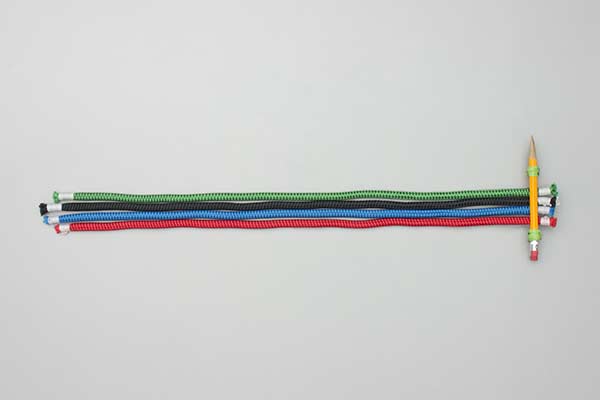


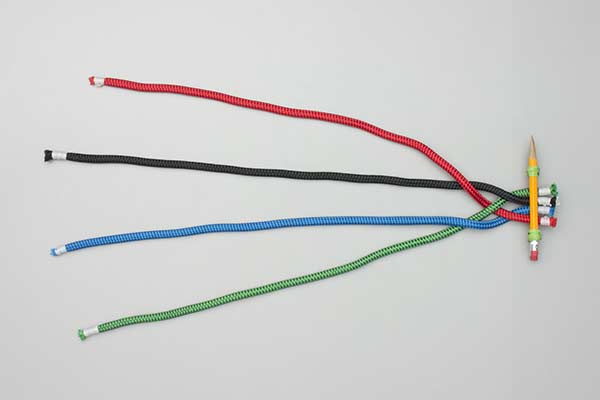
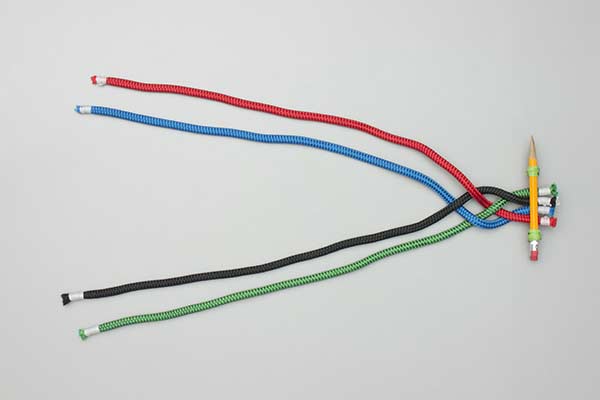
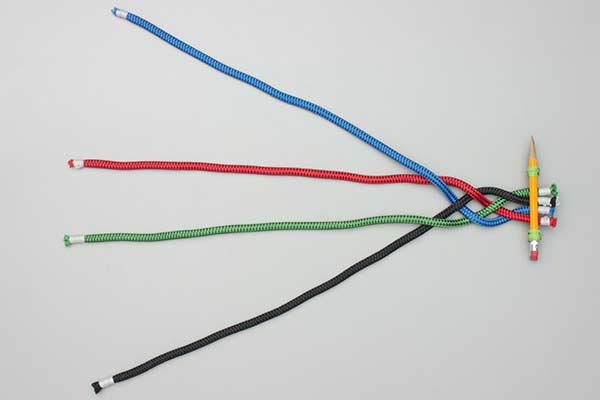
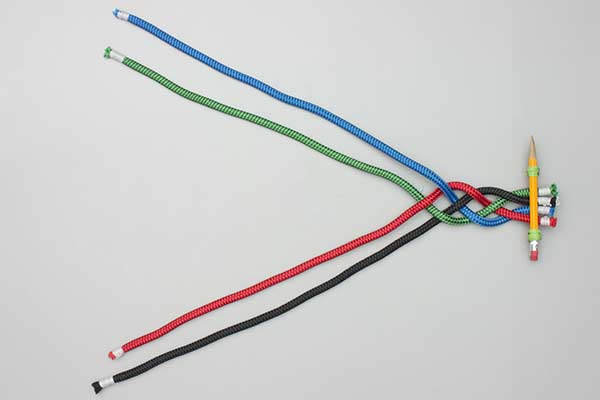
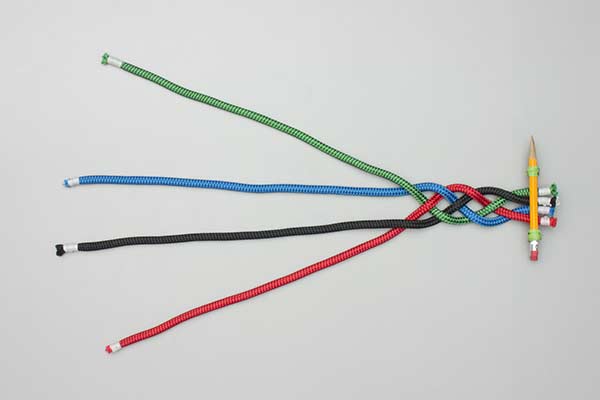




French Sinnet One Details
Description: Ashley (ABOK # 2976, p 490) names this French Sinnet (1) and points out that it is structurally the same as # 2979, p490, French Sinnet (2). The difference between the two versions is the way they are tightened. Version one tightens the strands symmetrically as shown here whereas version two produces the oblique pattern. Ashley also comments that the French call these Sinnets "Tresse Anglais" which causes some confusion when translated. Sinnet is also spelled Sennet, Sennit, and Synet.
Comparison: Six Simple Sinnets are shown here to illustrate that even e few strands allow considerable variety and Ashley actually shows a couple more which are not symmetrical. The Simple Braid (1) and the Simple Braid (2) are identical except they are viewed from opposite sides; moreover, tying each version feels quite different. The French Sinnet (1) and French Sinnet (2) are also essentially the same but the way they are tightened makes them look very different. The Square (or Round) Sinnet is pleasingly solid in contrast to #2974 which is more decorative and far more open.
Variations: The Animation shows only four strands but more are commonly used. With stiffer rope and an even numbers of strands, the sinnet tends to twist; each strand may have to be rotated slightly to prevent this. With an odd number of strands the edges balance each other and there is no tendency for the sinnet to twist.
Uses: Although less common today, these Sinnets were commonly used as decorative plats for "hangings", upholstery, and in trimming hats and dresses.
Starting the Sinnet: For this demonstration four cords, were clamped together as Ashley suggests using a pair of pencils either side of the strands with rubber bands at each end to provide the pressure.

